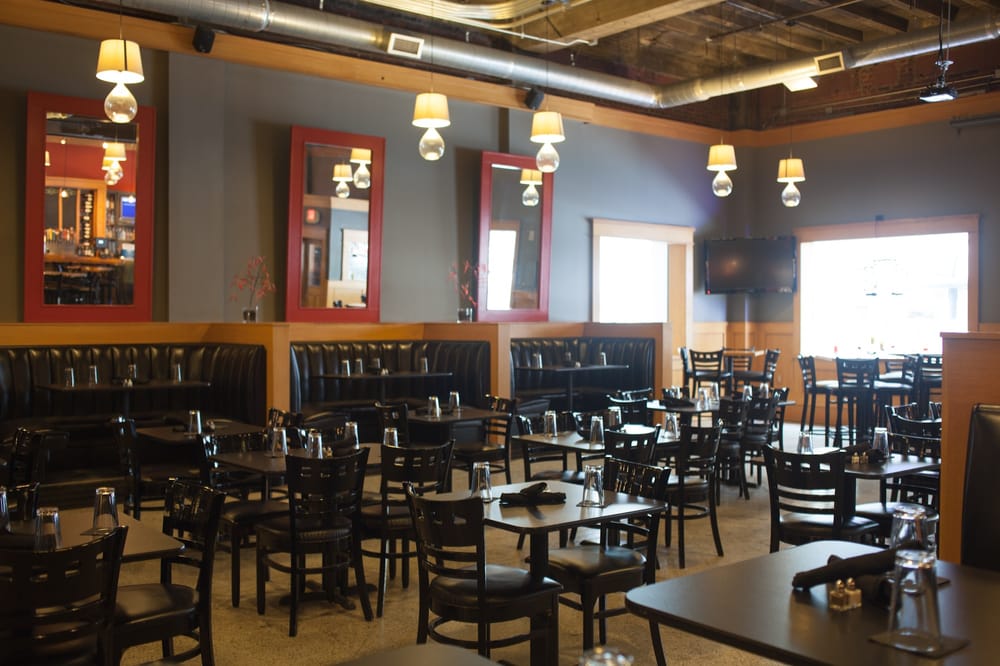
The economic recession has had a negative impact on the commercial furniture retail industry as consumers have cut back on non-essential spending. However, there is an uptick in demand. As a matter of fact, the entire U.S. furniture industry has recently outpaced the economy. In spite of all that, commercial furniture manufactures are still presented with a set of challenges making competition stiffer in the coming years. While manufacturing in general face some of these obstacles, commercial furniture manufacturing is more sensitive to consumer demand, price fluctuations and tight competitive nature of the industry. As it with all emerging industry trends, meticulous planning is crucial to steering around the competitive landscape and overcoming the following hurdles.
Shortage in Skilled Laborers
An uptick in restaurant furniture manufacturing may require you to enlist more laborers. The strong economy weak dollar ratio has increased manufactured exports. As confidence builds among manufacturers, businesses are spending more money on their items. Additionally, the tax overhaul bill has dramatically lowered corporate tax rates which has potentially encouraged more spending among businesses. Despite these opportunities, skill labor shortage is a challenge which furniture manufactures still need to tackle and overcome.
According to an ASQ survey, 41% of furniture manufacturers reported that finding skilled workers is their greatest obstacle. As key laborers including craftsmen are moving into retirement, manufacturers may struggle to find replacements. If you cut training programs like many companies unfortunately do, you won’t be able to develop these important skills within your existing workforce either. Building and crafting restaurant chairs and tables take skill, precision, and guidance. Be proactive in hiring your employees by either sending them to schools or start in-house training programs for those who are interested. Recruit contract workers to alleviate stress during busy periods or fill in the labor gap till you can afford long-term employees. Use your integrated <b>ERP</b> system to bridge the manufacturing skill gap between the retiring and incoming workforce by organizing and making records of your manufacturing process, operations and data in one place.
Price Inflations
Prices on commercial furniture manufacturing are hiking due to factors from within and outside the industry. The increasing cost of materials for furniture, especially used on restaurant booths , may force you into a tight position. You are left with the options to eat the costs or pass them down the chain to your customers at risk of losing your business to competing manufacturers. Many restaurant furniture manufactures are prepared to eat increasing business costs to stay buoyant in the competitive environment. Changing labor laws may also contribute to rising costs. Eighteen states have witnessed a minimum wage increase back in December, 31, 2018. Subsequently, employees have more leverage to demand higher pay because of labor shortage. If talent and competency in workers are of high value to you, you may have to pay for them whatever the cost.
You can program the ERP system and other data capturing systems with a Design-To-Cost approach with production. This process uses and maximizes real-time volume pricing and capacity data to reconcile cost objectives and design choices together. Implementing this method will allow your restaurant furniture manufacturing company to monitor and keep costs low while creating the furniture your customers want and need.
Fluctuation in Customer Demand/Preference
The bulk of the furniture market is composed of a range of people from baby boomers to millennials. When it comes to commercial furniture, preferences, and tastes and needs differ from each generation. Baby boomers and seniors are settled consumers and respectively represent 4% – 29% percent of the market. Millenials and the generation X group tend to be more affluent and make up 30% of the market. They also prioritize more sustainable product purchases. Cost increases and employee wage hikes are even more difficult for furniture manufactures to manage with fluctuating customer demands. Demand in the commercial furniture industry is heavily reliant on the customer’s tastes and on the restaurant design trends.
Trends have a major impact on commercial furniture manufacturing. With many venues going green, manufacturers are developing eco-friendly furniture. This trend is driven by environment concerns that many people seem to have. Although eco-friendly restaurant furniture is more expensive, the demand is on the rise giving manufactures an incentive to produce these items. Amateur restaurateurs on a tight budget will seek more affordable alternatives such as using rental companies and therefore less likely to invest in high-end furniture. As a manufacturer, you can view these fluctuating trends as an opportunity to experiment with new designs and styles as well as your product offerings. If need be, divert your concentration to furniture that meets the demands of new customers. Collect and monitor data on customer demand to predict changes in demands and better respond to any trend with evidence based customer decisions.
Plant and Supply Chain Efficiency and Visibility
A recent study done by LECTRA found that boosting efficiency in operations is top priority among 22.3% furniture manufacturing companies. In order to oversee the improvement of productivity, you need an aerial view of production across your entire chain – not only within your headquarter. Engaging with suppliers regularly will give you a better understanding of material availability and retailers to measure customer demands. You can capture production data within your plants to have a clear overview of your manufacturing process and create better workflows.
Your ERP system should give you better visibility on activities across your entire supply chain and increase efficiency of your ordering, inventory management and other procedures. An ERP system can help your furniture manufacturing company identify new marketing and business opportunities, quickly adapt to demanding shifts, and reduce expenses by tracking all the data coming in, through and outside parameters of your plants. But above all matters, you must be willing to address the challenges and trends you face to make the necessary changes for your commercial furniture company.
